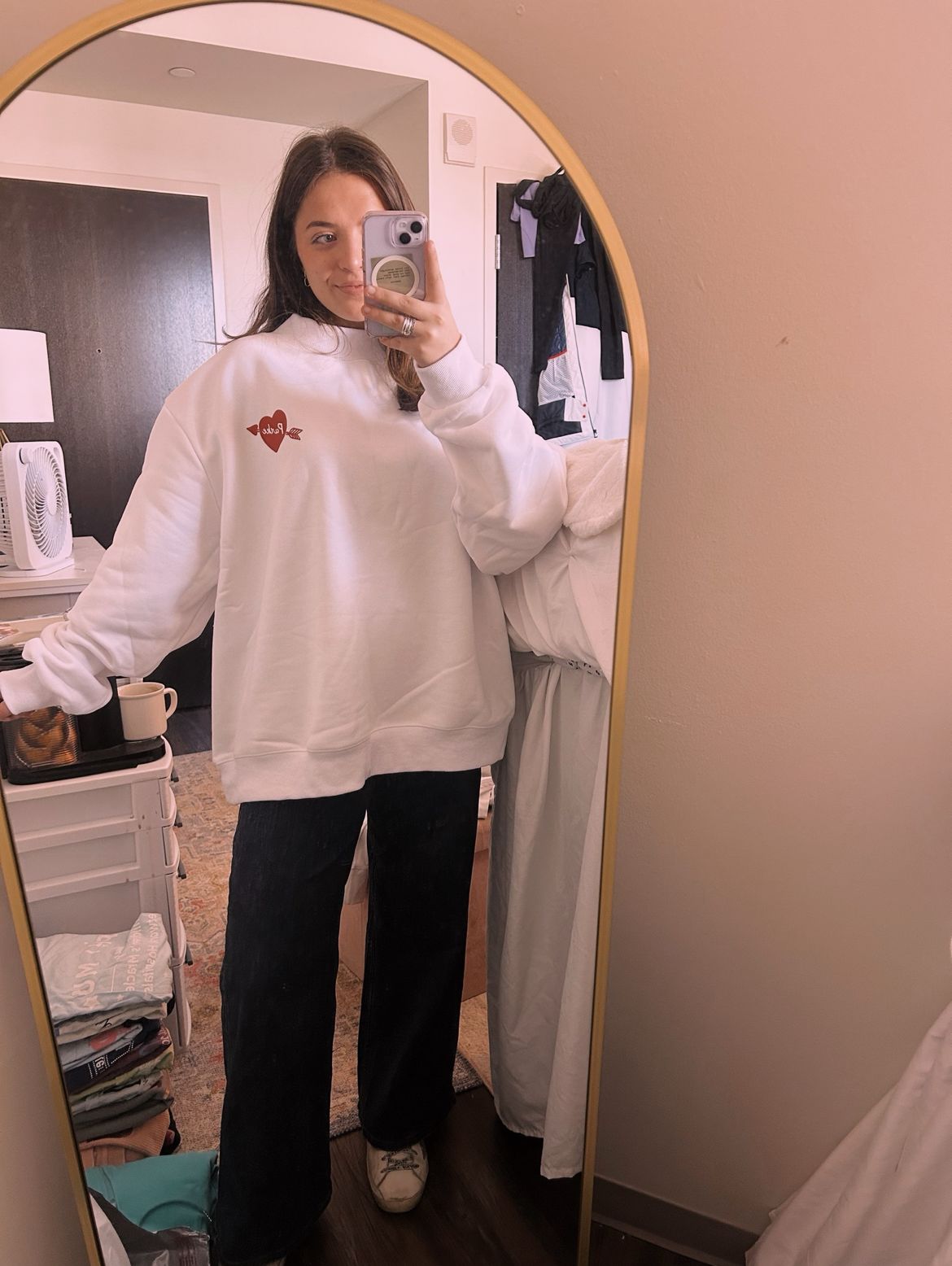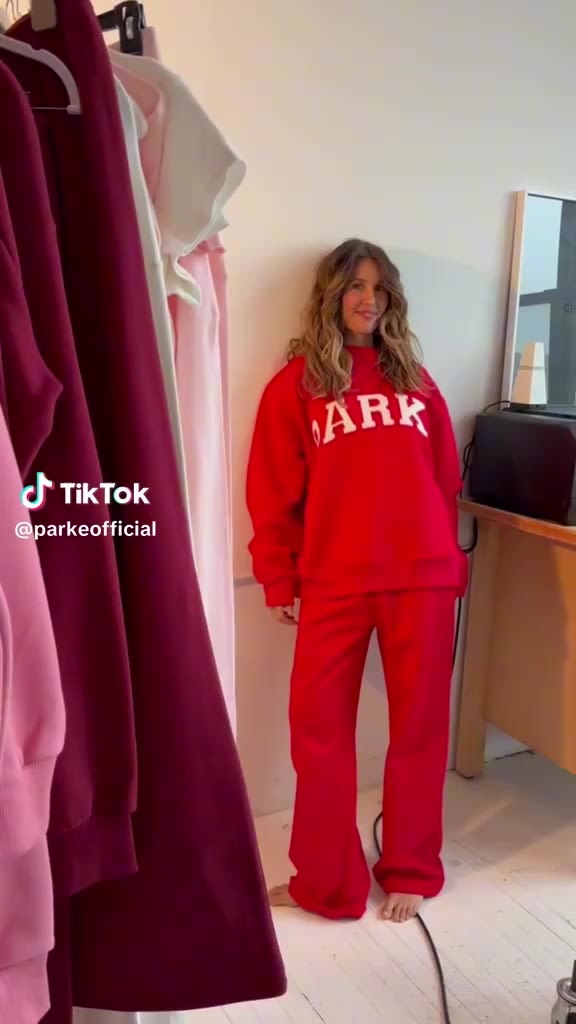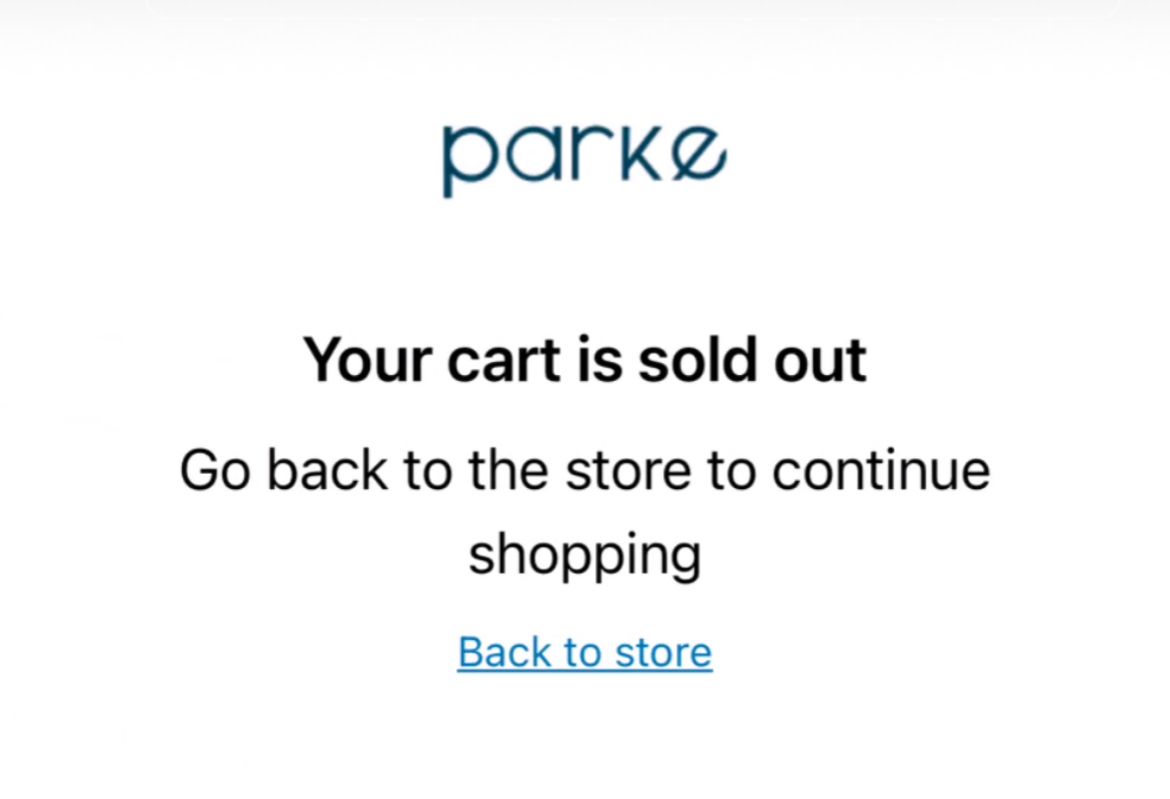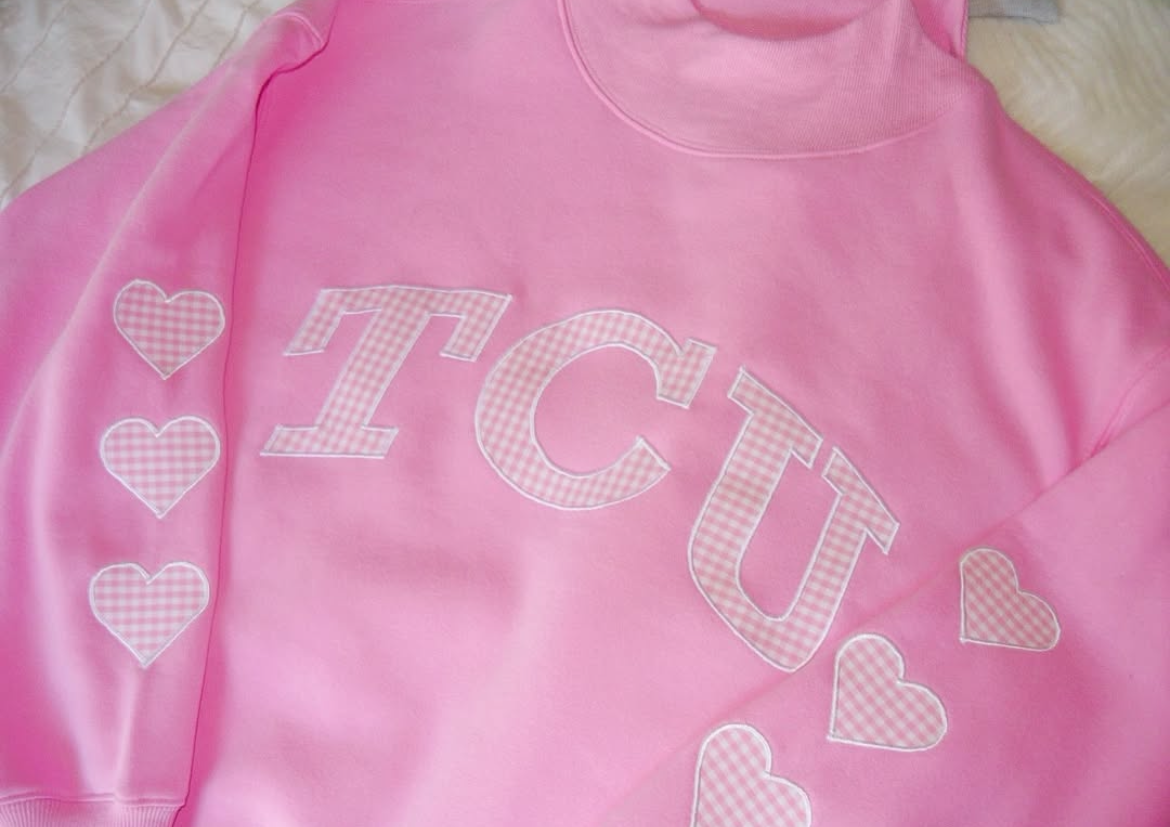Add it to the cart if you can...
Behind the scenes of FOMO fashion

The Valentine’s Day Parke drop was set to go live at 9 a.m.
In the two weeks leading up to Feb. 4, influencers on TikTok had been posting vision boards styling mock neck sweatshirts sold by digital casual clothing line. The pink and red sweatshirts emblazoned with phrases such as “manifesting the pink one,” were among the favorites.
The excitement around the drop matched the energy of the wait for concert tickets. Parke and its influencers tapped into FOMO, or “fear of missing out,” to stoke demand.
The idea is to create so much buzz around a new product that people flock online the moment it’s available. Brands like Parke and Dairy Boy are hyped by TikTok posts and influencers; missing out on the latest limited-drop of athleisure outfits is not an option.
Even those who weren’t influencers couldn’t resist posting. Teens and twenty-somethings took to social media with videos on the pieces they wanted. Others volunteered to snag items for those who couldn’t get online.
By the drop day fans were primed.
Grace Hebert was among them. At 8:59 a.m. She was sitting on her yoga mat inside the CorePower Yoga studio off South University Drive. Her sculpt class started at 9 a.m.
But Grace was hunched over her phone frantically refreshing the Parke website. She was determined to snag a pink mock neck sweatshirt.

FOMO Marketing
The demand that hit Parke on Feb 4 was “FOMO marketing” in action.
Bolstered by social media, “fear of missing out,” or FOMO marketing has become a powerful tool in fashion marketing. By offering limited qualities of trendy clothes and building demand by using social media influencers, brands are convincing consumers that if they don’t buy it now, they’ll regret it later.
While FOMO marketing is not a new concept, social media platforms like TikTok and Instagram have supercharged it into normalcy. It has a scarcity appeal: the more difficult something is to get, the more valuable it feels for the consumer. When everyone is on your feed unboxing the same sweatshirt that you couldn’t get, the perceived value only grows bigger and bigger.
The Taylor Swift Ticketmaster meltdown is one of the most viral moments of social media-fueled FOMO. Like these “get it while it’s hot” fashion trends, the Eras Tour sale was overwhelmed by demand, flooded with robots and panicked fans.
Thousands of consumers were left empty-handed. In both cases, this wasn’t just a case of a system failure, these limited sales are designed to create chaos and conversation and then capitalize on the frenzy.
The Parke drop spread through friend groups as people hoped if they couldn’t snag an item, a friend could. The communal nature of these drops mixed with how fast these items sell out has turned buying athleisure sweats into the newest team sport. It has led friends to coordinate leaving someone in charge and live-text their cart updates in hopes of beating the system.
“I knew I wanted to buy one of the crewnecks... I also knew that if I could, I was going to try to buy a crewneck for one of my friends,” Sophia Hamer said.
The sophomore biology major was left in charge of conquering the Parke drop not just for herself, but for a friend who worried she couldn’t shop the drop in time.
“I even tried to open up the website on another device to try to do a secondary checkout, but that ended up going slower than expected so everything sold out before I could get her item,” Hamer said.
By 9:03 a.m. every mock-neck sweatshirt in every size and color had sold out, and it did not take long for social media to flood with disappointed videos, as users stitched each other with reactions of sarcasm to genuine frustration.
Some had their favorite pieces in the cart only to be hit with error messages. A robot security check made others lose their place in line.
Even the most calculated effects didn't pay off.
Fashion connoisseurs like Grace had been watching TikToks and saving up for weeks.
9:05 a.m. and Grace didn’t get the highly coveted ballet pink mockneck she had her eye on. She couldn’t even secure one in red or cream. The site glitched, the item disappeared, and the adrenaline rush faded into disappointment.
Her friend and back-up, Hamer couldn’t get on the site either.
She had no choice but to move off her phone and into Chaturunga for the remainder of her sculpt class.
She was hopeful, confident and excited, but was still left uneasy like so many others, wondering if there is a method behind this Parke-related madness.

Missing out
For college students like Grace, fashion is not just about the clothes anymore, it’s also about the competition.
Limited-drops, TikTok influenced hype and influencer validation and trends have turned brands like Parke and Dairy Boy into trending gold, where missing out on the latest athleisure outfits is not an option.
The anticipation is often huge, but the reality of the drops can hit differently.
Parke’s Valentine drop sold out within minutes. The signature mock necks — ranging from $75 to $125 — everyone had been expecting were gone, accessories like socks, hats, and $80 boxer shorts was all that was left.
TikTok users quickly flooded the app with disappointed videos. Some called it a scam; others joked about sitting out the next drop out of frustration.

The TikTok effect
TikTok is not just a social platform full of creators and their outfit inspiration posts — it’s the engine behind the rise and fall of aesthetics and where trends go to live, peak and die sometimes in the span of only a few weeks.
Every scroll on the app’s For You Page is a signal that is either saying “here is what you should want right now” or “this is what you are already behind on”. By the time those who are not naturally ahead of the game become interested in a trendy new clothing item, it’s almost always too late to get it.
TikTok creators post “get ready with me to wear my new Parke sweatshirt”, unboxing and outfit inspiration boards turning simple clothing into objects of obsession. The bigger a brand's reputation grows, the more urgency is built for viewers to get their hands on the latest products.
TikTok doesn’t just introduce people to Parke; it sets the expectations early on for how unattainable the brand is.
“After extensive stalking on TikTok, I realized that this company was not a company where you could just go on and purchase a sweatshirt,” Hamer said. The app had already taught her that this was no longer a “normal” online shopping endeavor.
The backlash was instant. According to Chloe Gjura, a fashionably motivated college student who chronicled the fiasco in a Substack post, most customers “got a ‘sorry this item is sold out’ banner before they even got a chance to load their cart.”
Parke eventually issued a public apology, claiming it had underestimated demand and was working to improve the process. But for so many excited customers, the damage was done. The drop felt less like a celebration of community and more like a case study in how viral hype can implode. It left fans not with sweatshirts, but with a social media driven slap in the face.

Chasing trends:
For every young woman anxiously refreshing the Parke website at 9 a.m. on drop day, there is another conscientious objector that doesn't care to be racing to add the ballet-pink mockneck to their cart.
After months of trend cycles that seem to turnaround faster than a shipping confirmation email, many are starting to wonder: Is any of this worth it?
Not everyone is buying into the social media induced hype. Whether it’s burnout, boredom or just a better understanding of how influencer marketing really works, a growing number of consumers are choosing not to play the game at all.
“I honestly think it’s just a status symbol,” Jillian Alverson, a sophomore early childhood education major, said. “Consumers buy it for the logo, not because they actually love the clothes.”
For some consumers, the consistent pressure to keep up isn’t tiring, it's alienating. The constant burden of keeping up with social media’s new aesthetics and microtrends matched with limited drops and heavy price tags can leave young consumers feeling left behind or priced out.
“I think that Parke especially is super overrated and overpriced,” Alverson said. “Spending $100 or more on a basic sweatshirt with someone not even famous’s last name is kind of stupid.”
Even though Jillian is willing to spend money on similar and more established brands, she noted that those purchases don't bloom from social media frenzies like Parke did.
“I don’t freak out over the new drops,” she said. “That’s the difference.”
Choosing peace:
Opting out doesn’t always mean walking away from the trend entirely; sometimes, it means rewriting it with a personal twist.
“I really wanted a mockneck style item and liked that the font was different from the usual styles,” Grace said. “I don’t entirely understand the Parke hype, which is why I wanted an item that was more unique.”
She was in the queue, ready to go, but got stuck on the anti-robot test and watched the drop slip away.
“I texted people frantically to see if they could secure me something, but most of my friends were also unsuccessful.”
So she made her own ending.
“Ultimately, after I didn’t get it, I used a small business to just design my own mockneck,” she said. “It allowed me to buy into the trend and take the aspects of the Parke crewneck I liked but customize it and feel special.”
Not every dropout is a failure. Some are redesigns.
After missing out on the Parke drop, TCU sophomore Grace Hebert designed her own pink mock neck sweatshirt through a small business. (Photo courtesy of Grace Hebert)
After missing out on the Parke drop, TCU sophomore Grace Hebert designed her own pink mock neck sweatshirt through a small business. (Photo courtesy of Grace Hebert)
The bigger picture beyond Parke
For a generation synched with TikTok’s instant gratification and influencer altered algorithms, this experience is the new normal. The drop comes and goes within mere seconds, and the chance to “be in” slips by like a missed notification. All that is left is a cycle of want, click, crash and repeat.
FOMO marketing has turned online shopping into a digital rat race. Consumers are not just buying clothes, they’re after the scarcity, status and illusion of exclusivity these highly coveted and over-hyped items hold. It works. But how much longer will it work?
Maybe Parke’s next drop won’t be met with the same criticism or disappointment for selling out in seconds. Maybe the ballet pink mock neck will be able to stay in the cart long enough to dodge the robots and to actually be able to click “checkout”. Until then, the game goes on.


